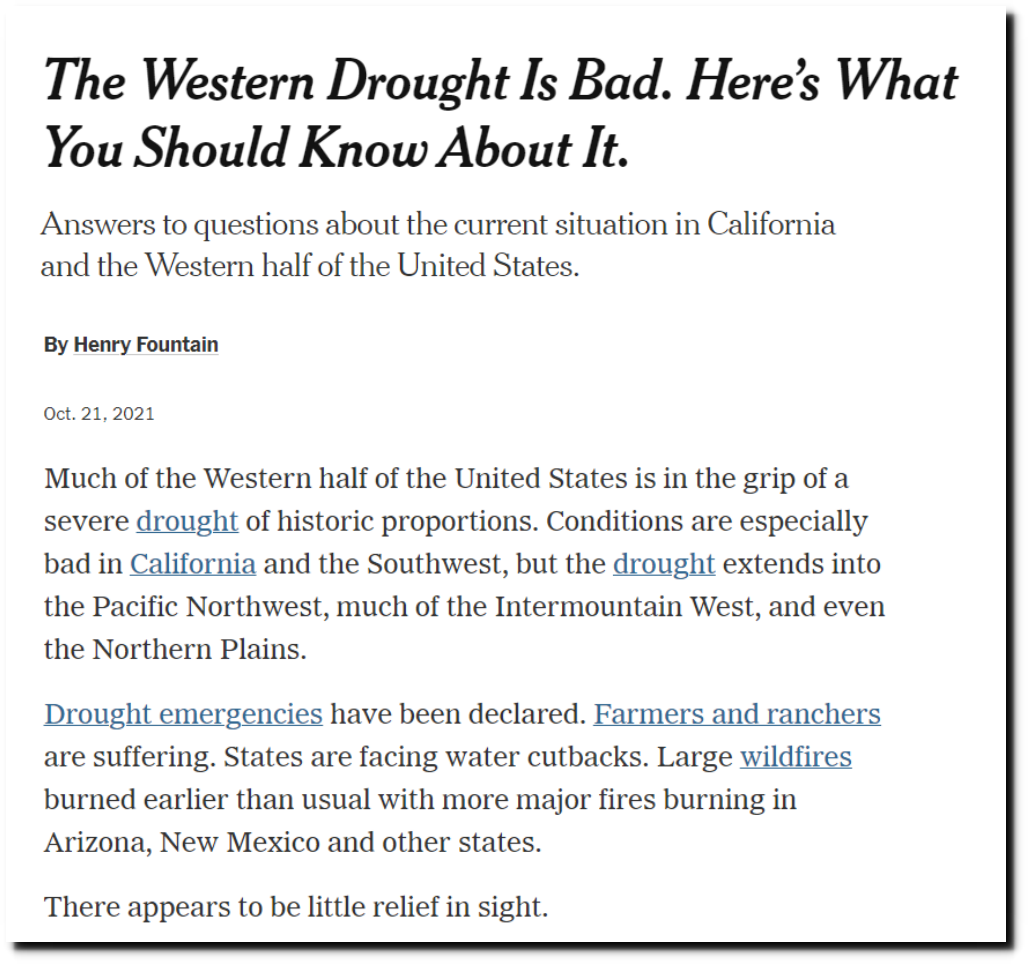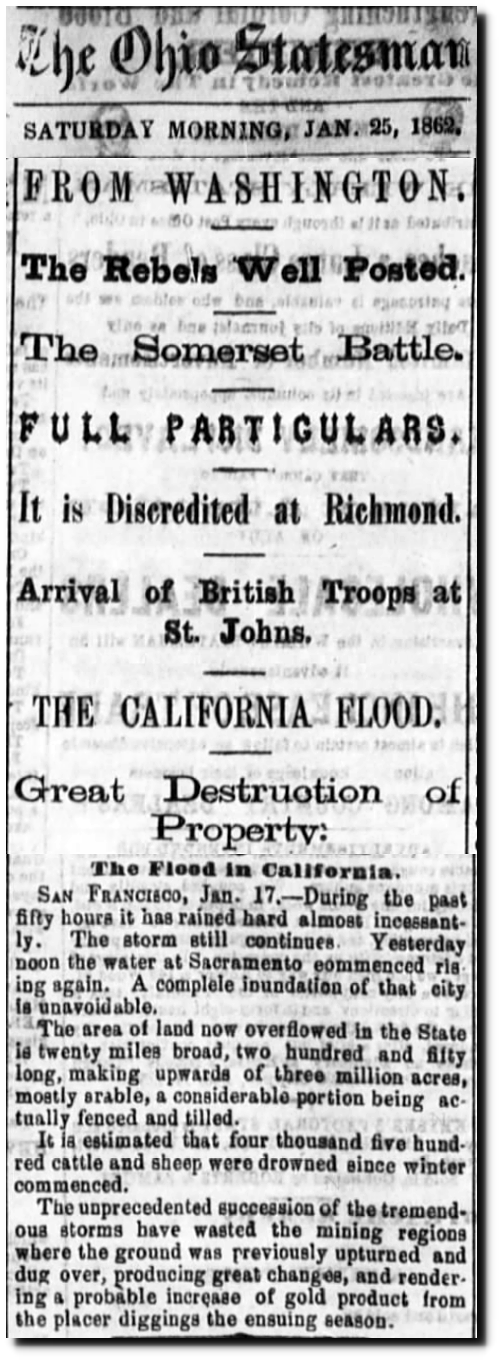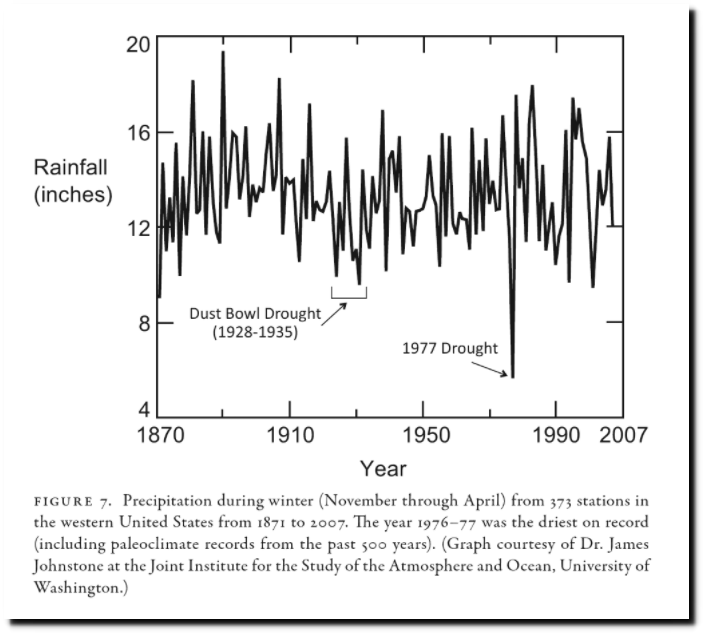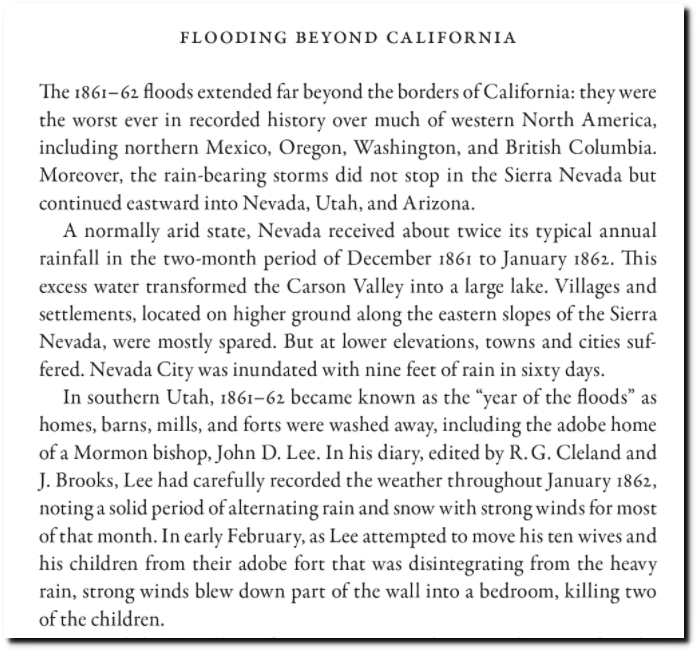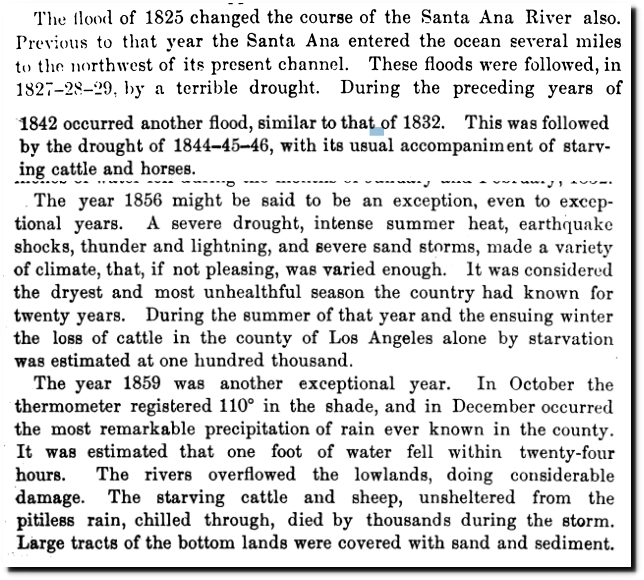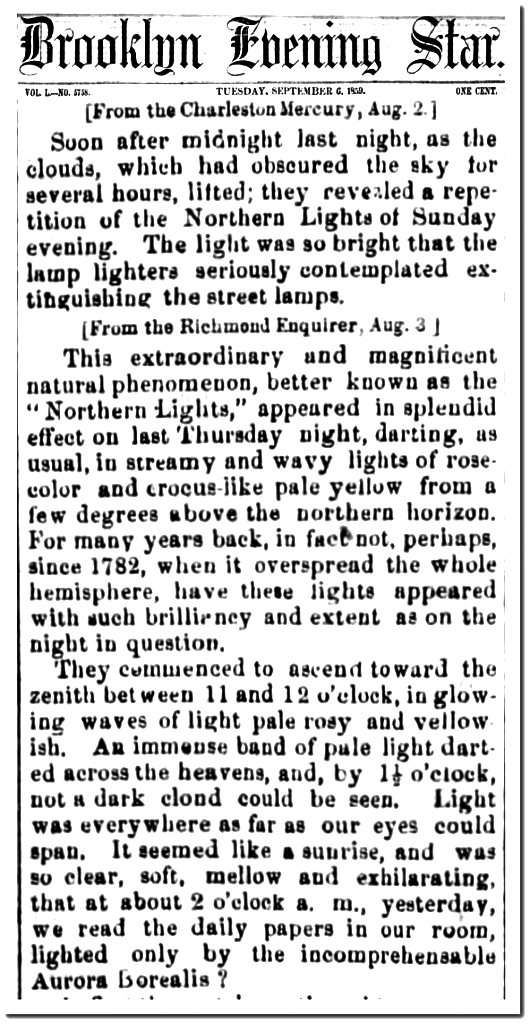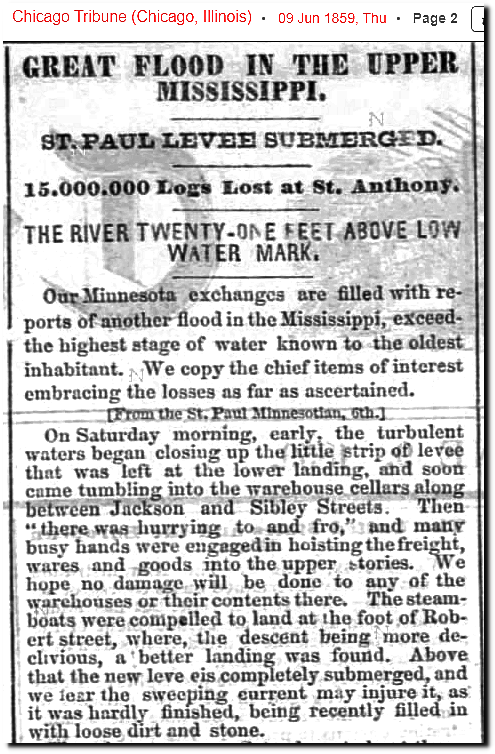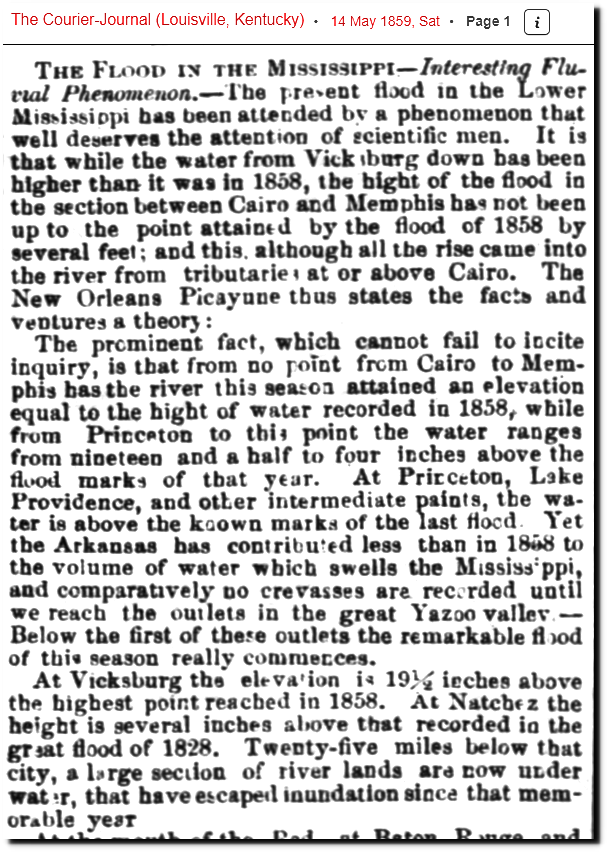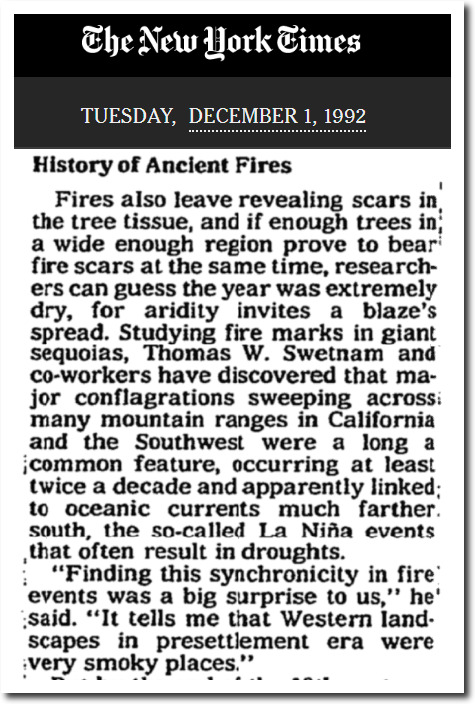“And it never failed that during the dry years the people forgot about the rich years, and during the wet years they lost all memory of the dry years. It was always that way.”
— John Steinbeck, “East of Eden”
Three days ago, the New York Times announced the permanent drought in California. Now they are flooded.
What to Know About the Drought in California and Western Half of U.S. – The New York Times
After Fires and Droughts, California Prepares for Heavy Rain – The New York Times
Five years ago, the New York Times announced the permanent drought, which was followed by their wettest winter on record.
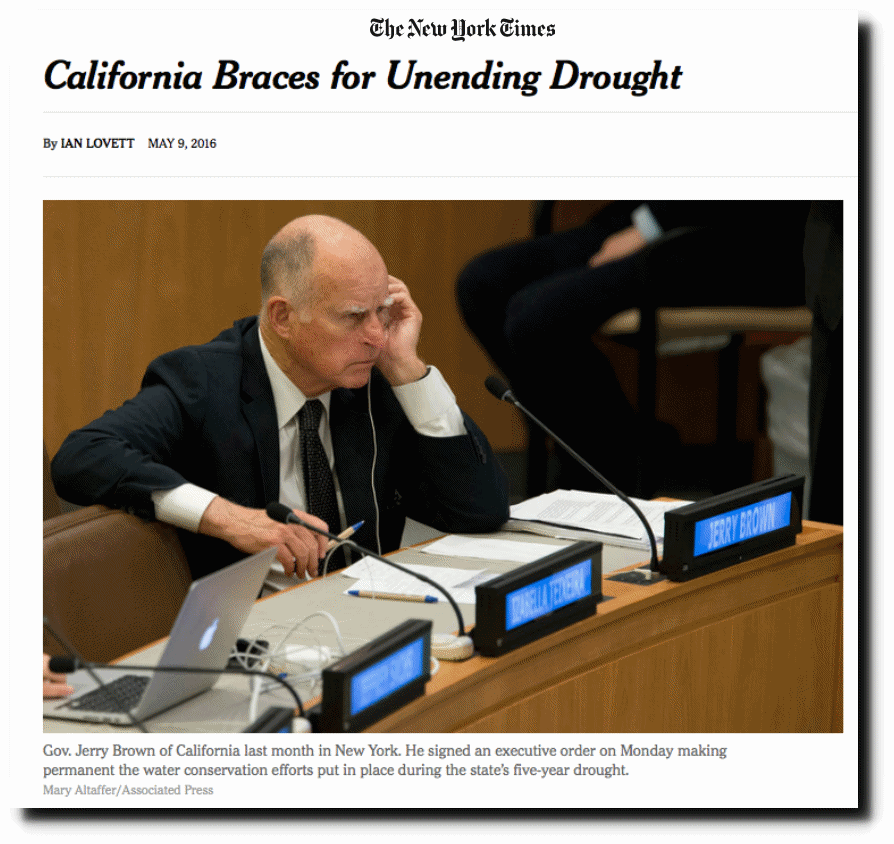
California Braces for Unending Drought – The New York Times
NWS: Northern California now on pace for ‘wettest water year on record’ – SFGate

In 1977, the New York Times announced the California permanent drought, which was followed by flooding.
Brown Warns of Drought Disaster; Says ‘Hard Choices’ Face California – The New York Times
09 Jun 1977, Page 1 – The Daily Inter Lake at Newspapers.com
TimesMachine: August 16, 1977 – NYTimes.com
TimesMachine: March 5, 1978 – NYTimes.com
In 1963, drought was followed by flooding
TimesMachine: January 21, 1963
TimesMachine: February 2, 1963 – NYTimes.com
(PDF) Fifty-two years of “pineapple-express” storms across the West Coast of North America
There has been no trend in California precipitation over the last 125 years.
Climate at a Glance | National Centers for Environmental Information (NCEI)
25 Jan 1862, Page 3 – Daily Ohio Statesman
Central Valley, California, 1861-62 – Top 10 Historic U.S. Floods – TIME
The West Without Water – Google Books
EXCEPTIONAL YEARS: A HISTORY OF CALIFORNIA FLOODS AND DROUGHT
11 Oct 1859, 3 – Daily National Democrat at Newspapers.com
It was 110F in October 1859 – the same year when Santa Barbara reach 133F on June 17 and the largest recorded solar storm occurred in early August.
13 Jun 1877, Page 2 – San Francisco Chronicle at Newspapers.com
13 Aug 1859, 2 – Pointe Coupee Democrat at Newspapers.com
29 Jun 1859, 4 – The Sacramento Bee at Newspapers.com
31 Aug 1859, Page 2 – Detroit Free Press at Newspapers.com
14 Sep 1859, Page 1 – The Louisville Daily Courier at Newspapers.com
31 Aug 1859, 1 – The Cadiz Sentinel at Newspapers.com
06 Sep 1859, Page 2 – Brooklyn Evening Star at Newspapers.com
There was a tremendous flood on the Mississippi the week before the record heat in Santa Barbara
09 Jun 1859, 2 – Chicago Tribune at Newspapers.com
14 May 1859, 1 – The Courier-Journal at Newspapers.com
30 Apr 1859, Page 1 – The Times-Picayune at Newspapers.com
29 Oct 1859, 3 – Sheffield and Rotherham Independent at Newspapers.com
01 Nov 1859, 4 – The Leeds Mercury at Newspapers.com
“BEGINNING about 1,100 years ago, what is now California baked in two droughts, the first lasting 220 years and the second 140 years. Each was much more intense than the mere six-year dry spells that afflict modern California from time to time, new studies of past climates show. The findings suggest, in fact, that relatively wet periods like the 20th century have been the exception rather than the rule in California for at least the last 3,500 years, and that mega-droughts are likely to recur.”
Severe Ancient Droughts: A Warning to California – The New York Times
Thirty years ago, the New York Times knew that the 20th century was unusually wet in California, and that the Medieval Warm Period was global.
“Lisa J. Graumlich, who examines the ring patterns of foxtail pine trees and western junipers in the Sierra Nevada, has compiled a detailed record of the year-to-year variation in temperature and precipitation over the last thousand years.
She has seen in the North American trees the feathery but unmistakable signatures of the Medieval Warm Period, a era from 1100 to 1375 A.D. when, according to European writers of the time and other sources, the climate was so balmy that wine grapes flourished in Britain and the Vikings farmed the now-frozen expanse of Greenland; and the Little Ice Age, a stretch of abnormally frigid weather lasting roughly from 1450 to 1850. A Crucial Question
“We can now see that these were global climate phenomena, not regional temperature variations,” she said. “The question is, how did we get those warmer temperatures during pre-industrial times, and what can we learn from those conditions about what is going on today?”
“Western landscapes in presettlement era were very smoky places.”

